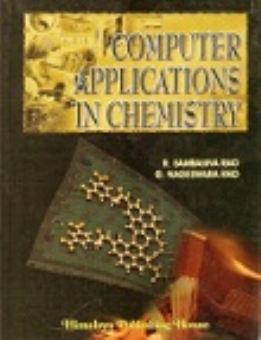The book contains 11 chapters dealing with introduction to computer hardware/software categories viz., operating systems, application packages and FORTRAN language and application of statistical and mathematical algorithms to chemical tasks.
Chapter 1 gives a bird’s eye view of computer hardware developments and software categories viz., operating systems, application packages and FORTRAN in different versions. Chapter 2 discusses the vocabulary of FORTRAN in terms of important categories viz. sequence, transfer control, repetition, subroutine and input / output statements, specification and termination statements. Chapter 3 is devoted for FORTRAN programs for matrix operations, sorting vectors, permutations and combinations etc.
In Chapter 4, algorithms and programs for the hydrogen ion concentration of a strong acid, titration of strong acid with alkali and calculation of volume of a van der Waal gas are developed based on roots of quadratic/cubic equation in one variable. This chapter aims at training the student to implement even object-oriented approach for any other complex task.
Gradient based optimization techniques are introduced in Chapter 5. Gauss-Newton and Newton-Raphson techniques are described in algebraic and matrix notation.
Linear, quadratic and Lagrange interpolation methods are described in Chapter 6. Predicting physico-chemical properties of aquo-organic mixtures at desired composition and calculation of stability constants are highlighted. Chapter 7 is devoted to numerical integration and first order differential equations. Chapter 8 describes the significance of given in chemical tasks. The calculations in visible and NMR spectra and Huckel Molecular Orbitals are posed as eigen value problems.
The basic concepts of statistics for univeriate data are introduced in Chapter 9. The topics included are errors, their distributions, precision, accuracy, point statistics (mean, variance, skewness, kurtosis) and confidence interval. The concepts of outlier and break down point along with robust statistics like median, median absolute deviation and Box-Whisker plot are illustrated with chemical data from drug design. The application of t-, Z-, Dixon- and F- tests is described taking examples from interlaboratory comparison study.
In Chapter 10, the cause and effect chemical models of binary data are described. Linear least squares analysis in algebraic and matrix notation is followed by the statistic
Contents :
1. Hardware and Software
2. FORTRAN Statements
3. Software Methods Base
4. Roots of an Equation
5. Optimization
6. Numerical Interpolation
7. Numerical Integration
8. Eigen Analysis
9. Univariate Analysis
10. Bivariate Analysis
Experimental Design
References
Appendices







